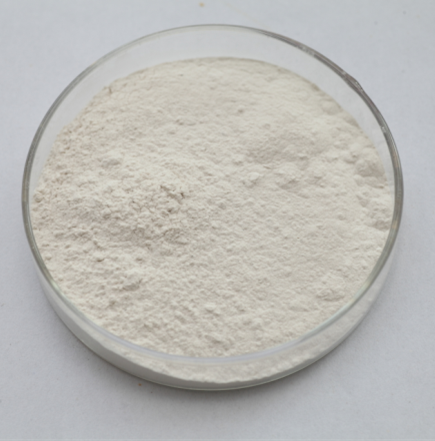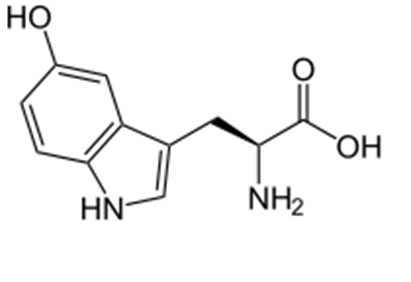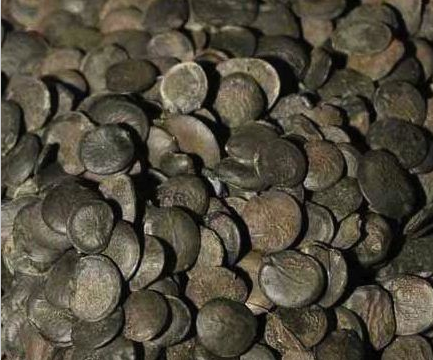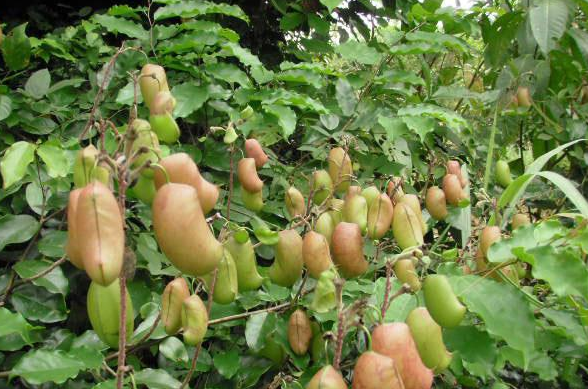Chinese wholesale 5-HTP Factory from Sierra Leone
Chinese wholesale 5-HTP Factory from Sierra Leone Detail:
[Latin Name] Griffonia simplicifolia
[Plant Source] Griffonia Seed
[Specifications] 98%; 99% HPLC
[Appearance] White fine powder
Plant Part Used: Seed
[Particle size] 80 Mesh
[Loss on drying] ≤5.0%
[Heavy Metal] ≤10PPM
[Pesticide residue] EC396-2005, USP 34, EP 8.0, FDA
[Storage] Store in cool & dry area, keep away from the direct light and heat.
[Shelf life] 24 Months
[Package] Packed in paper-drums and two plastic-bags inside.
[Net weight] 25kgs/drum
[What is 5-HTP]
5-HTP (5-Hydroxytryptophan) is a chemical by-product of the protein building block L-tryptophan. It is also produced commercially from the seeds of an African plant known as Griffonia simplicifolia 5-HTP is used for sleep disorders such as insomnia, depression, anxiety, migraine and tension-type headaches, fibromyalgia, obesity, premenstrual syndrome (PMS), premenstrual dysphoric disorder (PMDD), attention deficit-hyperactivity disorder (ADHD), seizure disorder, and Parkinson’s disease.
[How does it work?]
5-HTP works in the brain and central nervous system by increasing the production of the chemical serotonin. Serotonin can affect sleep, appetite, temperature, sexual behavior, and pain sensation. Since 5-HTP increases the synthesis of serotonin, it is used for several diseases where serotonin is believed to play an important role including depression, insomnia, obesity, and many other conditions.
[Function]
Depression. Some clinical research shows that taking 5-HTP by mouth improve symptoms of depression in some people. Some clinical research shows that taking 5-HTP by mouth might be as beneficial as certain prescription antidepressant drugs for improving depression symptoms. In most studies, 150-800 mg daily of 5-HTP was taken. In some cases, higher doses have been used.
Down syndrome. Some research shows that giving 5-HTP to infants with Down syndrome might improve muscle and activity. Other research shows that it does not improve muscle or development when taken from infancy until 3-4 years of age. Research also shows that taking 5-HTP along with conventional prescription drugs does improve development, social skills, or language skills.
Anxiety 5-HTP was found to be protective against carbon dioxide-induced panic attacks. One study compared 5-HTP and the prescription medication clomipramine for anxiety. Clomipramine is a tricyclic antidepressant used for treating obsessive-compulsive disorder. 5-HTP was found to be somewhat effective in reducing anxiety symptoms, but not as effective as clomipramine.
Sleep 5-HTP supplements fared a little better for insomnia.5-HTP decreased the time required to get to sleep and decreased the number of nighttime awakenings. Taking 5-HTP along with GABA (gamma-aminobutyric acid), a relaxing neurotransmitter, reduced the time it took to fall asleep and increased the duration and quality of sleep. One study found that children with night terrors benefited from 5-HTP.
Product detail pictures:

Related Product Guide:
It is a great way to further improve our products and repair. Our mission is always to create innovative products to prospects with a superior expertise for Chinese wholesale 5-HTP Factory from Sierra Leone , The product will supply to all over the world, such as: Madrid, Austria, Borussia Dortmund, Till now, the goods list has been updated regularly and attracted clients from around the globe. Detailed facts is often obtained in our web-site and you'll be served with premium quality consultant service by our after-sale group. They are going to help you get comprehensive acknowledge about our products and make a satisfied negotiation. Company go to to our factory in Brazil is also welcome at any time. Hope to obtain your inquiries for any pleased co-operation.
SUBSCRIBE: https://goo.gl/5ae3CV
How to Grow STEVIA Rebaudiana Bertoni Plant
How to Grow STEVIA Plant food
Growing Your Own Stevia
(Excerpted from Stevia Rebaudiana: Nature’s Sweet Secret, Vital Health Publishing)
If you enjoy gardening, Stevia can be a rewarding herb to grow. While it’s not feasible for most of us to grow sugarcane or sorghum in our backyard, several Stevia plants will fit nicely into a small garden. Recipes utilizing Green Stevia Powder are now available, and the whole leaves add to the flavor of herbal teas.
Stevia rebaudiana is a tender perennial, native to semi-humid subtropical regions of Paraguay and Brazil. Wild plants occur on acid soils that are constantly moist, but not inundated, often near the edge of marshes or streams where the soil is sandy (Brandle et al., 1998). In the garden, too, Stevia doesn’t like to dry out, but standing water will encourage rot and disease. Stevia can be a successful garden plant in most climates with the use of a few simple techniques. Raised beds or hills prevent “wet feet,” while an organic mulch and frequent watering ensure a constant supply of moisture.
In North America, Stevia survives winters only in the warmest areas such as southern California, Florida, and Mexico. Research in Japan indicates a critical winter soil temperature of 32 F to 35 F (Sumida, 1980). Stevia is a weak perennial, so plants grown as perennials should be replaced every few years. In colder areas, Stevia is planted after the last frost and treated as an annual. Longer summer days found at higher latitudes favor leaf yield and Stevioside content (Shock, 1982).
Soil Preparation
While tolerant of most soil types, Stevia prefers a sandy loam or loam. Any well-drained soil that produces a good crop of vegetables should work fine. Incorporating organic matter is the best way to improve heavy, high clay soils. A rich compost made with leaves, grass, hay, kitchen waste, manure, and other organic residues will improve soil structure and supply nutrients. Finished compost may be tilled, disked, or spaded into the soil before planting or used as a mulch later on. A “green manure” crop the previous year such as oats, rye, or legumes will also improve heavy soils. Stevia occurs naturally on soils of pH 4 to 5, but thrives with soil pH as high as 7.5. However, Stevia does not tolerate saline soils
Como crescer Stevia rebaudiana Bertoni Planta
Qualquer solo bem drenado, que produz uma boa colheita de legumes deve funcionar bem. Incorporando a matéria orgânica é a melhor maneira de melhorar pesados, solos de alta de argila. Um composto rico feito com folhas, grama, feno, restos de cozinha, esterco e outros resíduos orgânicos vai melhorar estrutura e fornecimento de nutrientes do solo. Composto final pode ser lavrada, disked ou spaded no solo antes de plantar ou usado como uma cobertura mais tarde. A “adubo verde” cortar ao ano anterior, como aveia, centeio, ou leguminosas também irá melhorar solos pesados. Stevia ocorre naturalmente em solos de pH de 4 a 5, mas vive com o pH do solo tão alto quanto 7,5. No entanto, Stevia não tolera solos salinos . Fosfato de rocha, farinha de ossos, e greensand oferecer uma ampla gama de minerais. Para a máxima disponibilidade de nutrientes, trabalhar adubos orgânicos no solo, alguns meses antes do plantio, ou misturar com adubo.
Come coltivare Stevia rebaudiana Bertoni piante
Qualsiasi terreno ben drenato che produce un buon raccolto di ortaggi dovrebbe funzionare bene. Incorporando la materia organica è il modo migliore per migliorare pesanti, terreni argillosi alti. Un ricco compost fatto con foglie, erba, fieno, scarti di cucina, letame, ed altri residui organici migliorerà la struttura del suolo e la fornitura di sostanze nutritive. Compost finito può essere coltivato, disked, o vangato nel terreno prima di piantare o utilizzata come pacciamatura in seguito. A “sovescio” ritagliare l’anno precedente, come l’avena, segale, o legumi migliorerà anche terreni pesanti. Stevia verifica naturalmente su suoli di pH da 4 a 5, ma cresce con terreno pH alto come 7.5. Tuttavia, Stevia non tollera suoli salini.
Mentre un buon compost di solito soddisfa i requisiti nutrizionali, i sintomi di test suolo o vegetali possono avvisare l’utente di carenze. Mark Langan di Mulberry Creek Herbfarm raccomanda basso azoto o fertilizzanti organici. Eccesso di azoto favorisce la crescita rango di sapore poveri. Farina di ossa, farina di sangue, farina di semi di cotone, guano, o letame essiccato fornire azoto che viene rilasciato lentamente. Fosfato o farina di ossa forniscono fosforo. Greensand è una buona fonte di potassio. Fosfato, farina di ossa, e sabbia verde offrono una vasta gamma di tracce di minerali. Per la massima disponibilità di nutrienti, lavorare fertilizzanti organici nel suolo un paio di mesi prima di piantare, o mescolare con compost
What is BIOPOLYMER? What does BIOPOLYMERmean? BIOPOLYMER meaning – BIOPOLYMER pronunciation – BIOPOLYMER definition – BIOPOLYMER explanation – How to pronounce BIOPOLYMER?
Source: Wikipedia.org article, adapted under https://creativecommons.org/licenses/by-sa/3.0/ license.
Biopolymers are polymers produced by living organisms; in other words, they are polymeric biomolecules. Since they are polymers, biopolymers contain monomeric units that are covalently bonded to form larger structures. There are three main classes of biopolymers, classified according to the monomeric units used and the structure of the biopolymer formed: polynucleotides (RNA and DNA), which are long polymers composed of 13 or more nucleotide monomers; polypeptides, which are short polymers of amino acids; and polysaccharides, which are often linear bonded polymeric carbohydrate structures.
Cellulose is the most common organic compound and biopolymer on Earth. About 33 percent of all plant matter is cellulose. The cellulose content of cotton is 90 percent, for wood it is 50 percent.
A major defining difference between biopolymers and synthetic polymers can be found in their structures. All polymers are made of repetitive units called monomers. Biopolymers often have a well-defined structure, though this is not a defining characteristic (example: lignocellulose): The exact chemical composition and the sequence in which these units are arranged is called the primary structure, in the case of proteins. Many biopolymers spontaneously fold into characteristic compact shapes (see also “protein folding” as well as secondary structure and tertiary structure), which determine their biological functions and depend in a complicated way on their primary structures. Structural biology is the study of the structural properties of the biopolymers. In contrast, most synthetic polymers have much simpler and more random (or stochastic) structures. This fact leads to a molecular mass distribution that is missing in biopolymers. In fact, as their synthesis is controlled by a template-directed process in most in vivo systems, all biopolymers of a type (say one specific protein) are all alike: they all contain the similar sequences and numbers of monomers and thus all have the same mass. This phenomenon is called monodispersity in contrast to the polydispersity encountered in synthetic polymers. As a result, biopolymers have a polydispersity index of 1.
The convention for a polypeptide is to list its constituent amino acid residues as they occur from the amino terminus to the carboxylic acid terminus. The amino acid residues are always joined by peptide bonds. Protein, though used colloquially to refer to any polypeptide, refers to larger or fully functional forms and can consist of several polypeptide chains as well as single chains. Proteins can also be modified to include non-peptide components, such as saccharide chains and lipids.
The convention for a nucleic acid sequence is to list the nucleotides as they occur from the 5′ end to the 3′ end of the polymer chain, where 5′ and 3′ refer to the numbering of carbons around the ribose ring which participate in forming the phosphate diester linkages of the chain. Such a sequence is called the primary structure of the biopolymer.
Sugar-based biopolymers are often difficult with regards to convention. Sugar polymers can be linear or branched and are typically joined with glycosidic bonds. The exact placement of the linkage can vary, and the orientation of the linking functional groups is also important, resulting in ?- and ß-glycosidic bonds with numbering definitive of the linking carbons’ location in the ring. In addition, many saccharide units can undergo various chemical modifications, such as amination, and can even form parts of other molecules, such as glycoproteins.
We have been looking for a professional and responsible supplier, and now we find it.









